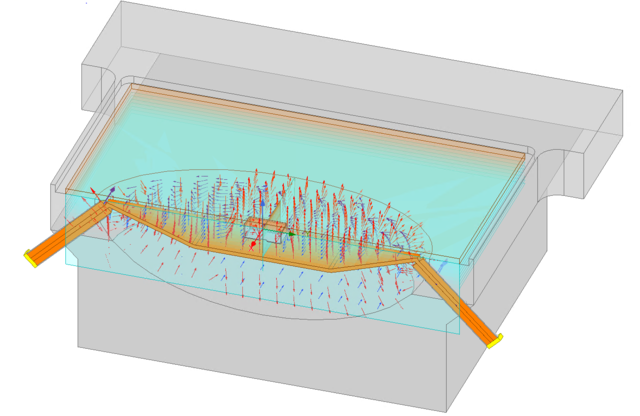EMC characterization of fast pulsing currents in 3D package design
This project is processed within a cooperation between the HF group of IGTE TU Graz and the EMC Verification Team at ams OSRAM Unterpremstätten and is entirely funded by ams OSRAM.
Vertical cavity surface emitting lasers (VCSELs) are key components for a wide range of application in automotive and consumer electronics sector. They feature various advantages over other types of lasers like conventional edge-emitting diode lasers or LEDs:
- surface emission, which offers design flexibility in addressable arrays
- low temperature dependence of the lasing wavelength
- superior reliability
- a wafer-level manufacturing process
Typical areas of operation for VCSELs are Light Detection and Ranging (LIDAR), gesture control (e.g. TVs, automotive incabin sensing) and 3D sensing (face recognition).

Visualization of LIDAR technology, source: Lidar - Light Detection and Ranging | ams
Nevertheless, the integration of this technology into wearable or mobile systems bears the risk of electromagnetic interference (EMI) between the VCSEL driver circuit and other integrated systems like 5G antennas, wireless communication, navigation or sensor systems. High currents and fast rise times of the pulses will lead to high emissions in the higher frequency bands. Various methods in circuit design, layout (IC, package, system) and mechanical design (shielding caps) are used to minimize the electromagnetic interference.
Since the devices are getting smaller and smaller and the used frequency bands in 5G net getting higher, the measurement of the different coupling paths gets nearly impossible. Here numerical field simulations can be used to predict the EMI behavior and study the coupling mechanism.
The aim of this project is to
- develop a science-based theory of electromagnetic interference in the near field for frequencies up to 40 GHz and a methodology to model and analyze the electromagnetic field emitted by the VCSEL with the help of numerical simulations.
- investigate the theoretically and physically realization of a new measurement methodology to characterize the emissions and to overcome the limitations of the established measurement method (TEM cell and IC stripline).
- analyze various interference scenarios and related EMI mitigation strategies in order to develop laser modules with minimum electromagnetic emissions.

Simulation model of IC stripline
As a result a complete simulation workflow to predict electromagnetic emissions of laser modules should be developed.
Period
- 2021 - 2024
Funding
- ams OSRAM Group
Members
Thomas Bauernfeind
Tel.: +43 (0) 316 / 873 – 7750
Email
